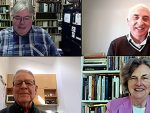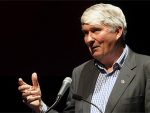On May 1, the Associated Press ran an interesting report on the return of conservative Catholicism in the United States.
The nutshell of the article is this sentence: “Generations of Catholics who embraced the modernizing tide sparked in the 1960s by Vatican II are increasingly giving way to religious conservatives who believe the church has been twisted by change, with the promise of eternal salvation replaced by guitar Masses, parish food pantries and casual indifference to Church doctrine”.
This news report is based on a few carefully chosen examples of Catholic parishes, schools, centres, and college campuses — it cannot offer the complete picture of a Church as big and diverse as Catholicism is in the United States.
But it tells a story of what those who work in the American Church today have seen in the last few years: students and colleagues on school campuses, new magazines and academic institutions, to say nothing of social media and various kinds of ministries available on the internet.
The article says that “despite their growing influence, conservative Catholics remain a minority. Yet the changes they have brought are impossible to miss.”
Yes, it is hard to deny that we are seeing a slow process to replace a certain kind of “Vatican II Catholicism” (granted the many ways in which this expression can be interpreted) with younger Catholics (lay men and women, clergy, members of religious orders) who privilege different formulations of Catholic theology, spirituality, and mix between action and contemplation.
It is a generational movement of young Americans looking for a sense of identity that they can claim is distinct and different.
This quest is articulated in doctrinal leanings, individual and communitarian lifestyles, and liturgical styles.
But it is not just young people.
It’s a moment of rebalancing, a swinging of the pendulum of theological thinking and religious needs that is trying to find a way to deal with a post-20th century material and intellectual world and its uncertainties, and in the United States especially, different from the expectations of the Vatican II period: persisting and heightened social and economic inequalities, the normalisation of war and militarisation of social control, the debate on gender, etc.
Discerning a healthy sense of the Church
This return of conservative Catholicism exists in different ways, not only in the United States.
It is a fact, and the sooner we stop denying it, the better.
The question is how to interpret and relate to it.
One option is to let these different identities develop in separate worlds and let a certain Darwin-like idea of life in the Church have its course.
Coexistence is possible but does not always happen naturally: unity takes work.
Putting this in the hands of “cultural warriors” would be potentially destructive, augmenting polarization and mutual alienation.
It would probably not lead to a formal schism but to a house divided, which, in the long run, cannot stand.
A different option would be to reconstruct spaces and moments for mutual recognition of the Catholicity of others’ Catholicism and a process of discernment, in all these different identity camps, of what is conducive to a healthy sense of the Church, of the Catholic tradition, of a Jesus-like life, and what is instead just an ecclesial mirroring of identity politics.
The Synod on synodality is just the beginning of this.
However, we cannot pretend that the Synod will succeed, even in opening spaces for this process, without some acceptance of uncomfortable reality.
Liberal-progressive Catholics today must find a different and alternative way to deal with the past and the tradition of the Church.
They must avoid the “burn it down” blindness and willful ignorance of self-flagellating intellectuals who refuse to see how much is true and good in the Catholic tradition and are incapable of seeing its good use.
An ostracising reading of the past responds to goals that are more political or of academic politics than ecclesial ones.
The other side (and it must be said that there are so many variations of the traditionalist-conservative movement in the Church) needs to find a different and alternative way to a neo-traditionalism which is incapable of criticising and, when necessary, changing the theological and ecclesiastical Catholic traditions on the grounds that “it cannot change because it never changed”.
A blanket glorification of the past is just a variation of the ideological fury of the self-righteous who think they are always “on the right side of history”, and it’s not how the Catholic magisterium deals with the past.
A sense of what the living tradition is
As French theologian Pierre Gisel wrote in a chapter recently published in a book, the central issue is the relationship with the past.
Gisel urges “a structuring relationship with the past [which] occurs in a scenario of differences”.
The quest of younger generations for identity is a way of rejecting the slippage from equality based on imago Dei to (self)enforced uniformity.
Dealing with this quest requires leaving behind any fantasy of having direct contact with the truth in real-time immediacy.
This means restoring some trust in the importance of mediations for the faith: mediations that are intellectual, liturgical, and institutional.
It’s a task that applies, in different ways, to both the neo-traditionalist and the post-ecclesial, futuristic Catholic imaginations.
For most of my life, as a Catholic born five years after the end of the Council, I found it easy to wear lightly and comfortably my Vatican II theology and spirituality as both a lay member of the Church and an academic.
This has become more complicated lately.
Sometimes, conservative Catholicism claims or attempts to be a return to the “real” Vatican II.
Sometimes, the return of traditionalism is dismissive of the theology of Vatican II or outright anti-conciliarism.
This has dangerous consequences on all levels—the return of antisemitism in some Catholic circles, for example.
The fact is that to respond to the ills of neo-traditionalism, you must have a sense of what the living tradition is, how it has worked in the past, and how it can work in today’s world.
And this is where we need to begin.
- Massimo Faggioli is a Church historian, Professor of Theology and Religious Studies at Villanova University (Philadelphia) and a much-published author and commentator. He is a visiting professor in Europe and Australia.
- First published in La-Croix International. Republished with permission.
News category: Analysis and Comment.




